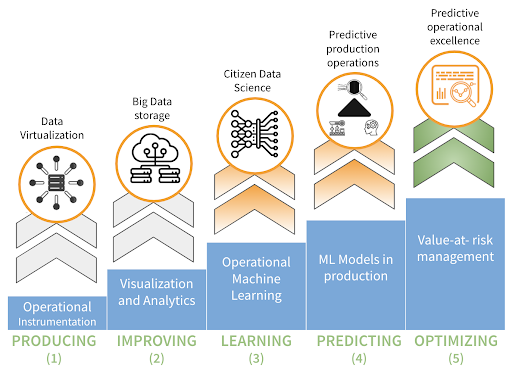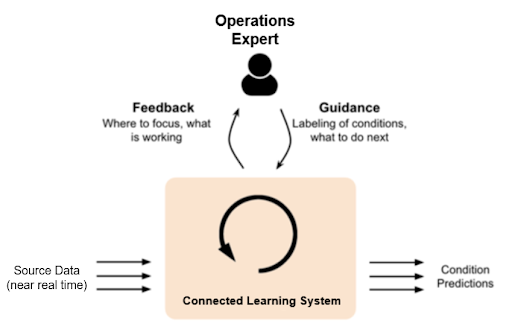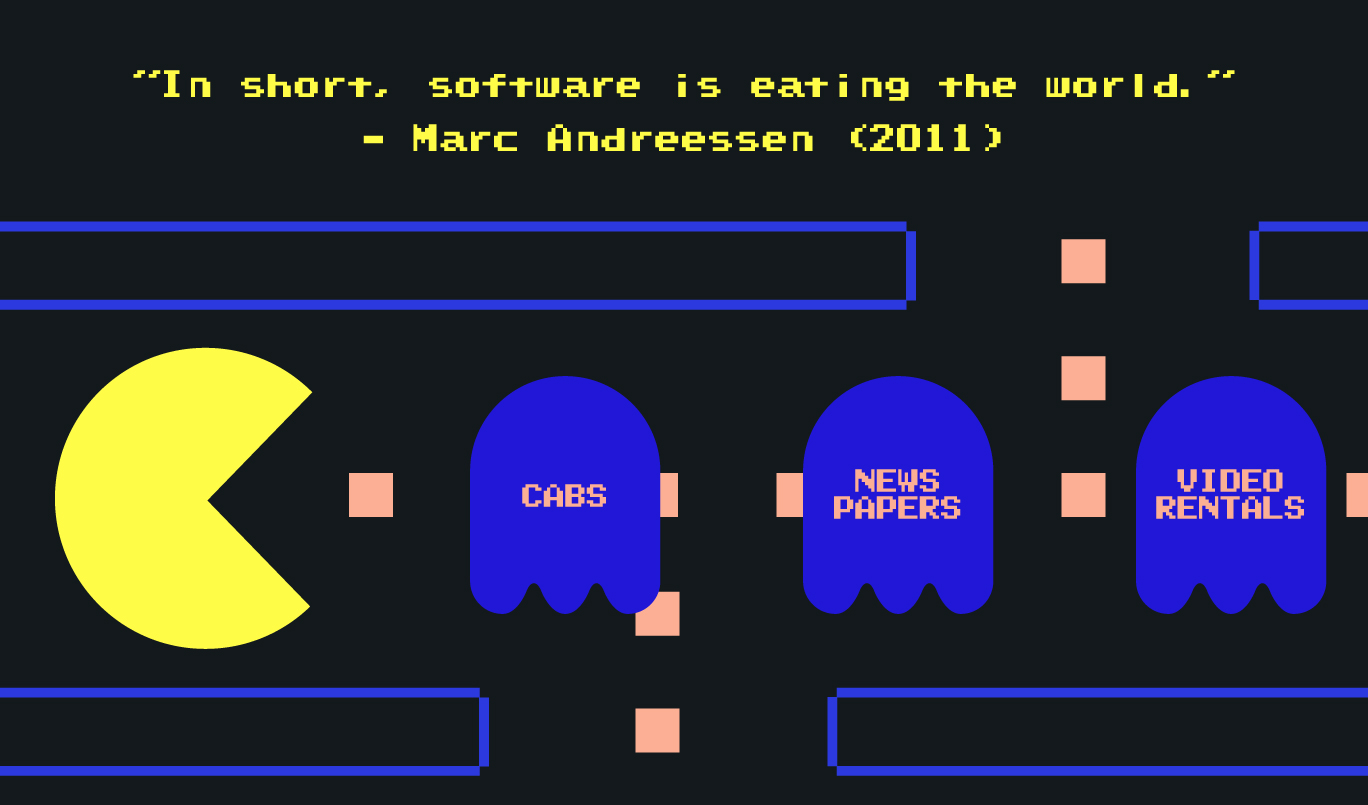Operations Digitalization Maturity Model
Key takeaways:
- Predictive operational excellence is bringing a fundamental improvement in the performance of manufacturing and intelligence operations
- Most organizations proceed linearly through a multi-year journey to reach this goal
- We highlight the investments many companies are making in certain stages of this journey that delay value and increase risk
Organizations with large manufacturing and intelligence operations have been investing for a few decades in operational instrumentation to produce data. Through a variety of experiments, they have broadly validated the value buried in this vast and underutilized asset. The business environment during and the consequences of the global pandemic are now amplifying the need to accelerate value generation from this soft asset. However, extremely few organizations are delivering digital value to their business because the value generation journey is an arduous and frustrating one.
Lets treat different stops along this journey as a digital transformation maturity model. Each plant and mission may be at a different maturity level as illustrated in Figure 1. Each level calls for a new skill category and a corresponding team of knowledge workers to be developed in the organization. Each maturity level also requires the commissioning of new software or hardware technologies. An organization can easily spend one to two years and millions of dollars to go from one maturity level to the next.

Figure 1. Operations Digitalization Maturity Model
Almost all organizations are currently operating at Level 1 of the digital transformation maturity model, which we call the Producing Level to imply that the organization is in a stable but not a digital operational state. In this level, operations are generating data for either control or monitoring. This data represents mechanical, chemical, electromagnetic, seismic, acoustic, or other physical activity. Some organizations have invested to make this data more easily available to users through data virtualization, through enterprise historians, to enable process improvement projects. One of the difficult tasks in this Level is to contextualize the data so that it is possible to relate various data sources. This hurdle has impeded progress towards realizing value from operational instrumentation and also cast a doubt on the viability of data virtualization approaches.
At Level 2 of the digital transformation maturity model, organizations are investing in tools to improve their operations using the data created in Level 1. We call this the Improving Level as organizations seek to find opportunities to improve operations that generate the data. Analytics technologies that compute expressions over the data or that evaluate rules to produce alerts from it are often used at this level. Data can also be visualized in a temporal or spatial layout that allows experts to interpret behaviors in real-time if intervention is needed. However, this is an inherently tedious and error-prone process with results that are not easily validated or judged for value.
Advanced Level 2 organizations have been pouring IT resources to collect data into Big Data storage structures called data lakes so that they can later perform more sophisticated analytical processing. However, because teams lack a proven means of analysis that works against data lakes and don’t have good standards for data lakes, there is great difficulty in correctly designing these data lakes. Regardless of the maturity of organizations, we are yet to see companies that are creating substantial value just from Level 2 work. Considering the expense involved in this work, we find it to be an inefficient architectural overhang when it precedes the next levels.
At Level 3 of the digital transformation maturity model, the Learning Level, there is a serious opportunity to derive deep insights from operational data by applying more sophisticated analysis such as machine learning. Still, going from data to insight is challenging on two fronts – having the right technology and having the operational know-how. Arranging both requires a tremendous amount of activation energy. Moreover, establishing success also requires social acceptance, which adds to the challenge. In our experience, learning on operational data is hard due to a variety of factors, not the least of which is that reliable and truly insightful operational machine learning requires successfully harnessing patterns. Successful Level 3 organizations are often able to perform off-line analysis of their data without going through Level 2 activities. The main challenges facing companies in Level 3 are: the understandability of insights and the effort required to validate results.
We have seen companies succeed at the Advanced Level 3 by putting powerful analytical tools such as the Falkonry Workbench in the hands of continuous improvement and process engineers. These citizen data scientists find insights easily that are validated through collaboration with plant operational experts. Explainability in such tools helps them forensically determine root causes of failure modes and identify process improvements that avoid such events. Such companies are able to save 2 to 4 years by skipping over all the intervening levels and taking their operational instrumentation data straight to citizen data scientists. The main remaining difficulty is that most organizations lack carefully kept records that can be used for performing validation. Availability of operational experts who can review the insights to validate the findings by applying their tribal knowledge is also difficult because experts are very busy plant personnel. It is made harder by the fact that the issues typically happened a long time before someone started to analyze them and a lot of the short-term tribal knowledge is lost.
In Level 4 of the digital transformation maturity model, the Predicting Level, organizations can take the successful use cases from Level 3 and create predictors of future behavior so as to avoid issues that cannot be eliminated completely. This level requires connecting real-time data sources to the predictive analyzers. Users can export Falkonry Analyzers from the Falkonry Workbench, which can then be easily deployed on factory floors or in distributed environments to provide real-time situational awareness and actionable early warning. However, it takes some IT acumen to manage these prediction systems. Also, the same citizen data scientists have to maintain the prediction systems.
Therefore, Advanced Level 4 customers are going straight to predictive production operations, where patterns are automatically surfaced by a continuously running system from operational data. By going to this level, organizations also skip the difficulties of Level 3 and gain the ability to manage operations in the now. Insights produced by Advanced Level 4 companies can be readily validated by operations experts and they can interact directly without even needing citizen data scientists. The main difficulty for these organizations is that the actionable insights need to be correctly prioritized and all the contextual information around the action such as documentation, parts, and schedule needs to be brought together. Regardless of the difficulty, this is the most turnkey solution that is available to organizations today. It is the prerequisite for scaled adoption of AI in advancing operational excellence. Falkonry has invested millions of dollars of research and development money to introduce Advanced Level 4 to organizations in an easily consumed business model.
In Level 5 of the digital transformation maturity model, which is called the Optimizing Level, organizations are able to organize actionable insights from the Level 4 and prioritize actions across different types of benefit areas such as availability, reliability, and quality. They bring together contextual information into a single interface and scheduling process. They are also able to evaluate the benefits of their operational excellence efforts in terms of events avoided, actions executed, expert engagement, event confirmation rates, and prevalence of conditions. Operations management turns the evaluation into management practices to lay the foundation for continuous improvement of digitalized operations. They are able to map financial targets more reliably to plant operations and they cope more readily to a dynamic business environment. These organizations are Industry 4.0 lighthouses and serve to educate peers and partners. They are able to push down practices throughout their supply chain. They are the pioneers of a new method of operational excellence we call predictive operational excellence.





